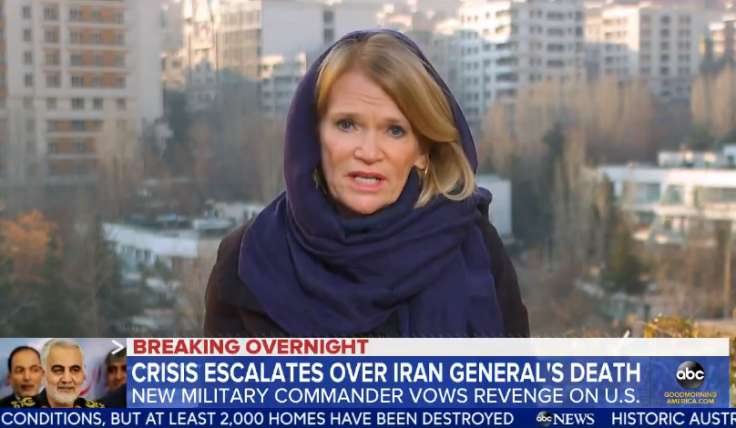The U.S. media's peculiar (albeit predictable) response to President Donald Trump's successful assassination of Iranian general Qassem Soleimani continued on Monday during their coverage of the terrorist's funeral in Tehran.
NPR had reporters on the ground covering the "historic day" and attempting to dispel claims that the grief on display in the streets of the Iranian capital was in any way "coerced" by the authoritarian regime.
Moments before the 'Death to America" chants began. pic.twitter.com/hHzkfZ042f
— Mary Louise Kelly (@NPRKelly) January 6, 2020
Michael Barbaro of the New York Times highlighted the "amazing images and audio" from the NPR team. Several hours earlier, Barbaro posted a bizarre podcast interview with Times reporter Helene Cooper in which Cooper lamented that the U.S. military was "tragically ... very good" at killing people.
https://twitter.com/lachlan/status/1214201110388518914?ref_src=twsrc%5Etfw%7Ctwcamp%5Etweetembed%7Ctwterm%5E1214201110388518914&ref_url=https%3A%2F%2Ffreebeacon.com%2Fnational-security%2Fnyt-reporter-defense-department-quite-tragically-good-at-killing-people%2F
ABC News's Martha Raddatz donned a (mandatory) headscarf and walked among the "massive and emotional" crowds of mourners. She declared that the Iranian people were "united against America."
"A powerful combination of grief and anger, with shouts of 'death to America' echoing through the streets around us." https://t.co/Ho2Tizj1C6@MarthaRaddatz reports live from Iran. pic.twitter.com/kFrcKycwSg
— Good Morning America (@GMA) January 6, 2020
The Associated Press published a touching piece on Ayatollah Ali Khamenei's "rare display of emotion" at the funeral of the terrorist general "with whom he shared a deep bond." The AP noted that the Iranian despot's "voice cracked under the weight of the moment" as he "cried openly" while mourning the death of his friend.
Some journalists did not let the somber occasion stop them from sharing "sick burns" aimed at President Trump. Washington Post national security reporter Missy Ryan, for example, took a break from reporting to retweet a photo comparison of the crowd of mourners in Tehran and the crowd in attendance at Trump's inauguration.
A wapo natsec columnist RTing this is why media employers will soon be forced to stop all of you from tweeting anything that’s not a link to your own edited and curated work. pic.twitter.com/Z2CE7XuXJx
— Noah Rothman (@NoahCRothman) January 6, 2020
Meanwhile, one of Ryan's colleagues at the Post published a deeply reported story on the Soleimani strike that appeared to contradict initial reporting that suggested the decision to target the Iranian general—who was personally responsible for the deaths of American soldiers in Iraq—was made impulsively by a president eager to start a third world war.
https://twitter.com/gabrielmalor/status/1213975643114876928
Additionally, the New York Post provided some useful reporting on the Soleimani funeral by publishing photos of what was alleged to be the dead general's casket lying across a row of seats on a passenger jet.
Qassem Soleimani's dead body flies coach back to Iran https://t.co/FG7sws1YPj pic.twitter.com/botje1e6h2
— New York Post (@nypost) January 6, 2020
